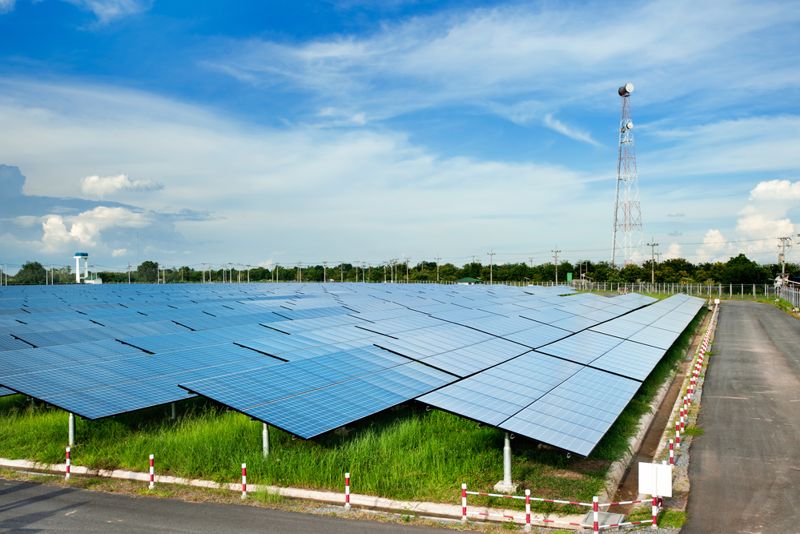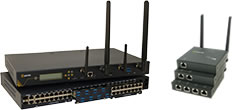
The benefits of remote device access and management
By Max BurkhalterSeptember 11, 2020
The internet of things is quickly becoming ubiquitous across industries, helping companies overcome key logistical obstacles, wasted spending and productivity issues. The benefits of IoT integration are wide-reaching for today's tech-savvy businesses, especially those that rely on remote devices, such as solar panels, manufacturing equipment, agricultural systems and much more. While plenty of security vulnerabilities still exist for most commercial IoT devices, many experts are hopeful about the future of connected technologies and remote management.
On-site vs. remote devices
Historically, companies have managed a variety of devices and technologies that were installed on-premises. For example, manufacturing firms operate heavy machinery that must be closely monitored and adjusted when performance issues arise. Using industrial control systems, on-site management teams are able to collect and analyze real-time data that informs their decision-making. Thanks to automation, these monitoring tasks have been substantially streamlined, as machine learning and artificial intelligence enables thes systems to auto-correct when problems are detected, according to Arnie Gordon, Forbes contributor and president of Arlyn Scales. But what about off-site equipment?
The introduction of IoT devices into live production environments has had a profound impact on how companies manage their off-site IT assets. In the past, businesses relied on static public IP addresses to access remote devices, noted a recent article from IoT For All, which left them vulnerable to brute-force attacks and exploitation. One popular workaround was to use virtual private networks or management clients installed on each device. However, since most IoT devices lack the processing power needed to operate client software, this solution proved to be less than sustainable.
Today, more companies are moving toward private IP addresses and remote management tools that are able to interface with IoT devices. By partnering with a trusted cellular provider, organizations can hide their devices within a protected network. This approach also allows IT administrators to incorporate advanced authentication methods, ensuring unauthorized users cannot gain access to sensitive data or monitoring systems. This new IoT landscape offers a variety of benefits for business across industry lines, though choosing the right solution may require substantial legwork and pre-deployment testing.

Enabling remote work
One of the biggest advantages of remote device access is that it allows companies to move many of their workers to an off-site capacity. Employees are able to check on device performance, make necessary adjustments and respond to security incidents without being physically present. For example, employees at large farming operations can track weather patterns and growing conditions from the comfort of central or home offices. This level of adaptability is especially crucial during times of uncertainty — the COVID-19 pandemic has forced many manufacturing plants to make sweeping changes to their workflows. In fact, one survey from the National Association of Manufacturers found that around 53% of polled business leaders believe the coronavirus pandemic will have a lasting financial and operational impact. With remote device access, companies can adhere to all social distancing guidelines while keeping their critical equipment in working order.
Incorporating predictive maintenance
Another key benefit of remote device access is the potential for predictive analytics and equipment maintenance. As Deloitte explained, predictive maintenance empowers companies to identify performance problems and mechanical flaws that could lead to major repairs if left unresolved. Rather than waiting around for something to break down, IT professionals can anticipate these issues and take action, reducing unplanned downtime and lost productivity. In most cases, this is made possible through a fleet of connected IoT sensors, which feed information back to a centralized monitoring platform. Furthermore, by incorporating machine learning and AI, organizations can receive alerts well in advance of a breakdown. This is particularly important for infrastructure located in remote areas — rather than sending out a technician to resolve a single issue on one piece of equipment, companies can schedule several maintenance tasks for each visit.
Increasing network security
Although most IoT devices are seen as cyber security liabilities, they can enhance network protections when effectively integrated. As the technology firm Notep noted, remote access software comes with event logging features that can help IT administrators understand what's happening on their networks. These logs provide a ton of detail about who is accessing the network and remote devices, what tasks they're performing, and when. Event logging can not only help identify cyber attacks, it can also locate management inefficiencies and ensure remote devices are performing as expected.
In general, strong networking protocols are foundational to the success of any IoT application. According to Iota Communications, most companies choose one or more of the following types of networks for their wireless IoT devices:
- Cellular
- Local and Personal Area Networks (LAN/PAN)
- Low Power Wide Area Networks (LPWAN)
- Mesh Networks
Determining which type of network an organization needs requires a lot of planning and testing, though one element is consistent across all environments: Organizations need reliable connectivity tools and networking infrastructure to keep their operations running at peak efficiency. That's why Perle offers industrial-grade networking tools, including our robust Ethernet switches and console servers, which are graded for use in harsh, outdoor conditions.
To learn more, read some of our customers' success stories.



